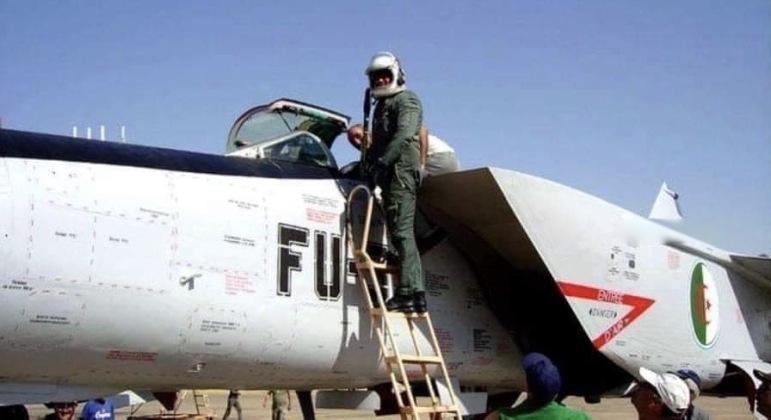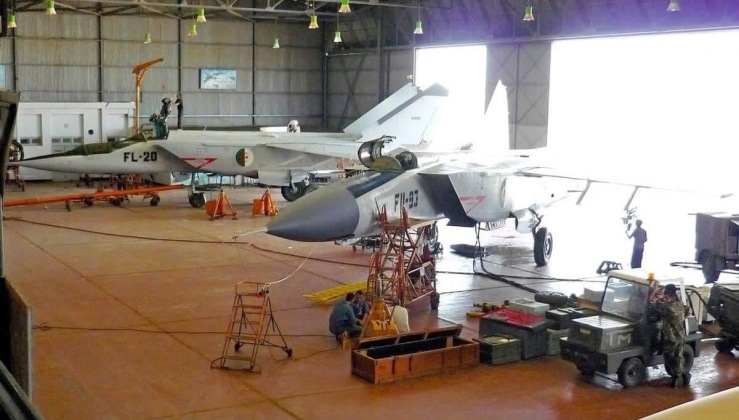News
The World’s Fastest Combat Jets Guard Africa’s Largest Country: How Dangerous Are Algeria’s MiG-25 Foxbats?
Long considered to field the most capable combat inventory in Africa, the Algerian Air Force deploys the continent’s only large fighter fleet comprised entirely of modern fourth generation designs with nine units comprised of Su-30MKA, MiG-29 and Su-24M aircraft. Where Algeria long since retired pre-fourth generation fighters, however, it continues to operate a tenth unit of combat jets comprised of heavily modernised variants of the MiG-25 Foxbat heavyweight interceptor – which represents the fastest combat aircraft in frontline service anywhere in the world. Algeria was the first export client for the MiG-25, receiving them approximately seven years after they first became operational in the Soviet Union in 1970, and continued to place further orders for more modern Foxbat variants with fourth generation capabilities while retiring older models. The MiG-25 was by far the most capable Soviet aircraft ever exported during the Cold war in term of air to air capabilities, having been deployed against enemy combat aircraft in at least five countries with an outstanding record under combat conditions, and formerly formed the elite of the Algerian fleet and its only means of challenging the superiority of Western and Israeli F-15 Eagle heavyweight fighters.

The MiG-25 was not widely exported due to its extreme costs, with combat variants sold only to oil producing Arab states while reconnaissance variants were operated in very small numbers by India and Bulgaria. There was a strong incentive from the 1990s to retire the MiG-25 despite its formidable performance, with newer Soviet and Russian combat jets such as the Su-27 and MiG-31 interceptor having much lower operational costs and overall superior performances. Algeria is also expected to retire the MiG-25, with multiple indications that they may eventually be replaced by Su-57 fifth generation fighters. The MiG-25 saw its most notable operations in Algeria in 1988 when the country hosted a congress of the Palestinian Liberation Organisation (PLO) which the Israeli Air Force considered conducting air strikes against. The Algerian Air Force used MiG-25s to enforce a no fly zone around the area of the congress with two Foxbaats kept constantly in patrol over it, and when Israeli F-15s approached Algerian airspace the scrambling of further MiG-25s reportedly had a decisive impact and forced the Eagles to turn back. The Israeli Air Force had previously encountered Soviet-operated MiG-25s which it had found impossible to shoot down using older F-4 fighters despite multiple attempts, and even the F-15 struggled to match the Foxbat with the Eagle notably losing its last known engagement against it when flown by the U.S. Air Force in 1991.

Algeria’s MiG-25s are thought to be the most capable ever to enter service, and were upgraded extensively in the 1990s to the latest standards in terms of avionics and sensors. Their very high operational costs and questions regarding their continued viability as air to air missile technologies continue to improve has nevertheless created a strong incentive for retirement. The MiG-25 may well forever hold the title of the world’s fastest manned combat jet, although it has since been outdone in particular by China’s WZ-8 drone which represents the world’s first hypersonic aircraft with a speed estimated at around Mach 6. The Foxbat’s speed is estimated at around Mach 3.2, although the aircraft was very far ahead of its time entering service approximately 50 years before the WZ-8. The Foxbat has no direct successor in Russia today, with the MiG-31 ending production in 1994 and the much improved MiG-31M being cancelled by the cash strapped post-Soviet government. Russia is currently developing a next generation interceptor under the PAK DP program, which according to some reports will be considerably faster than the Foxbat and potentially hypersonic, and while Algeria may well be a leading potential export client it remains highly uncertain whether the program will actually materialise.












